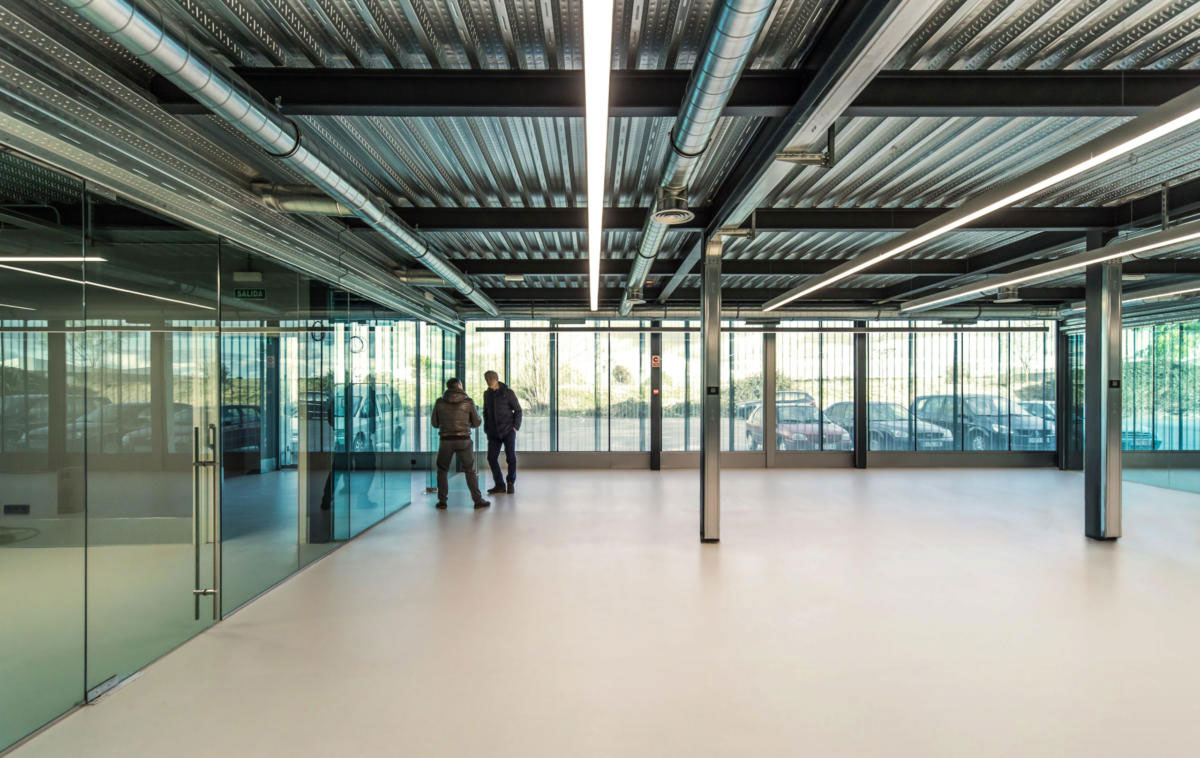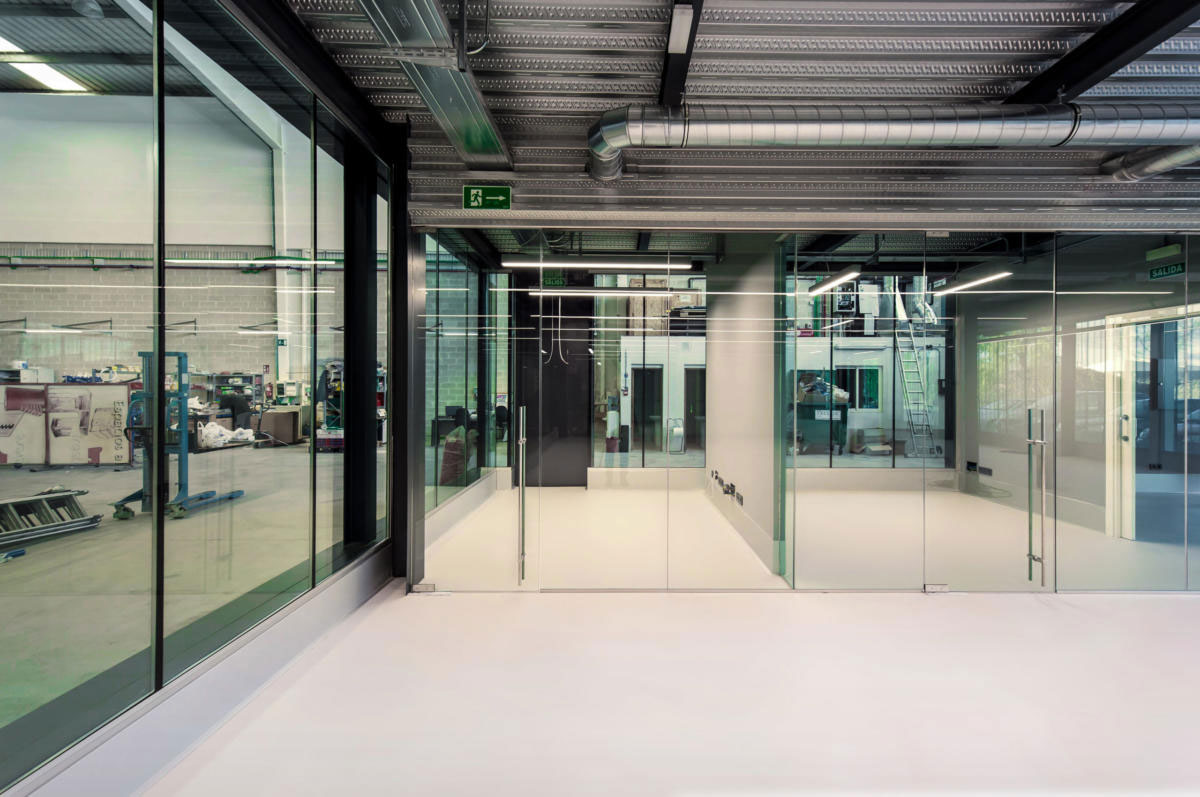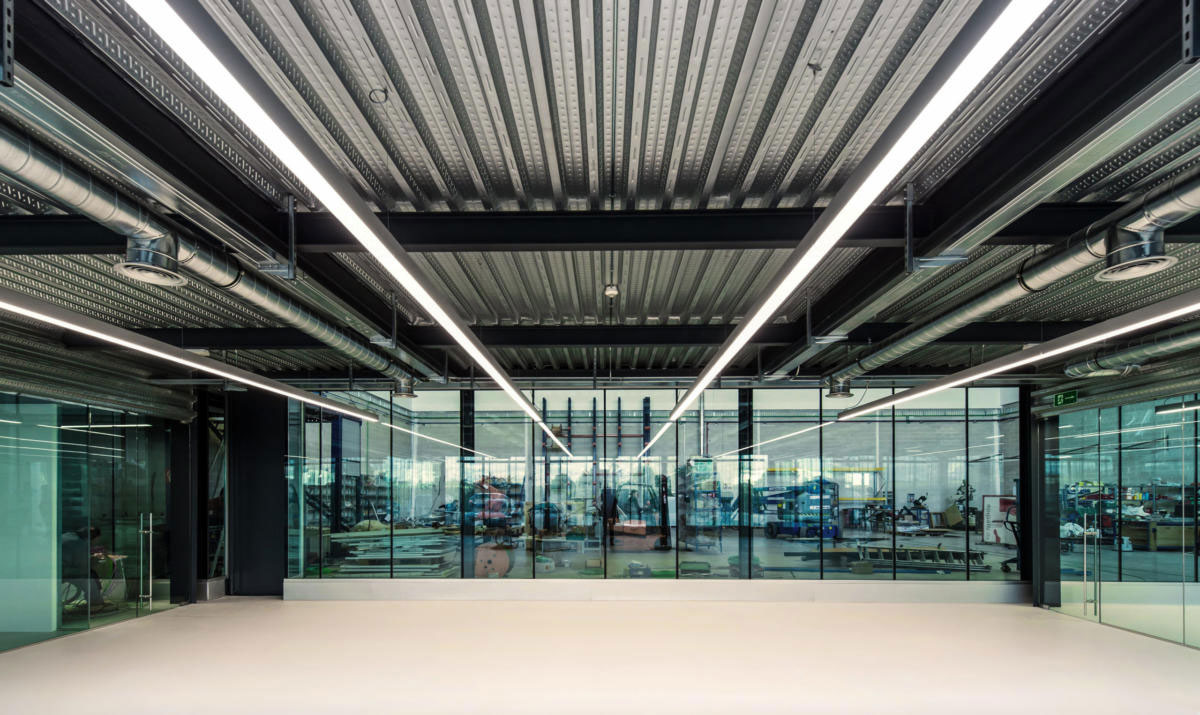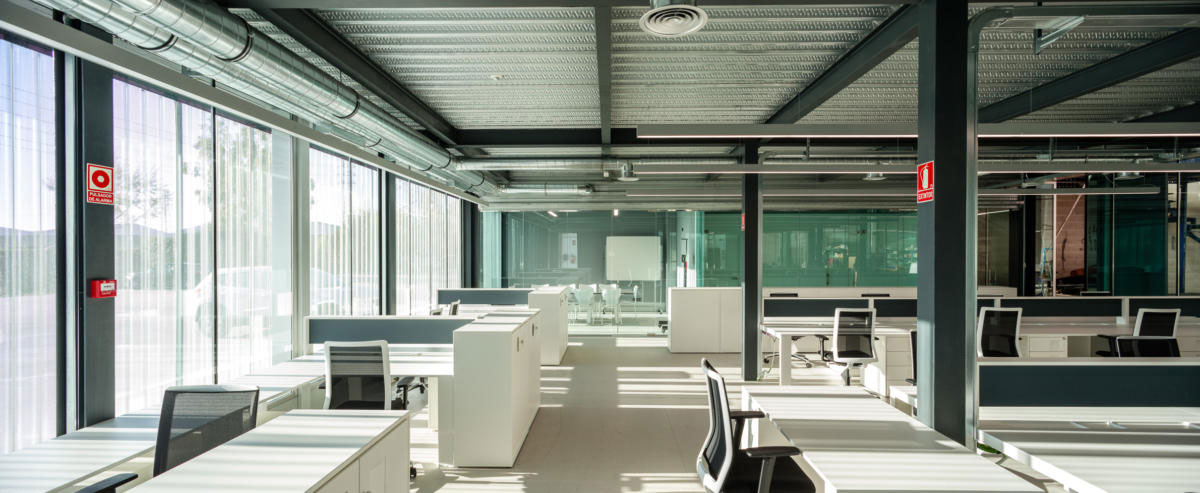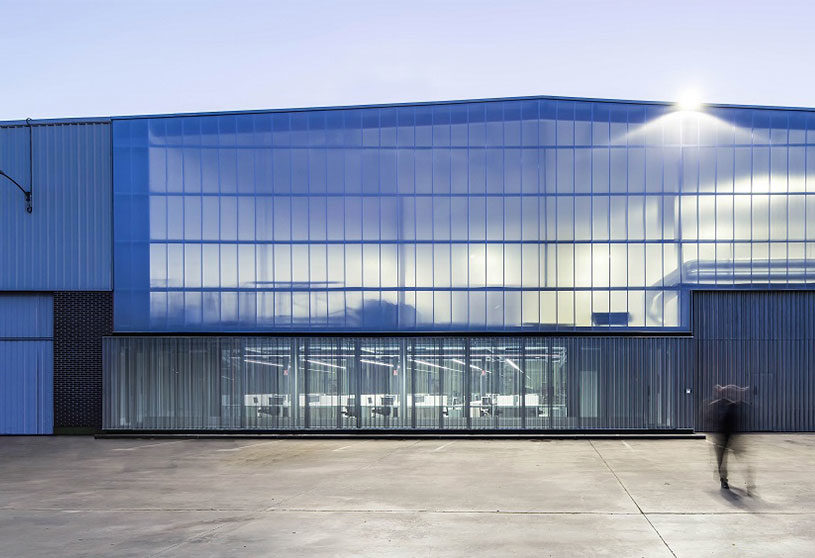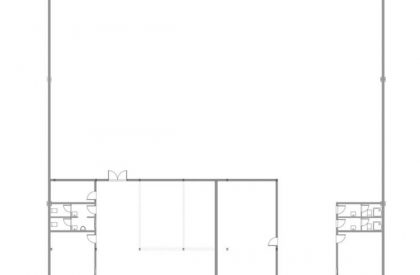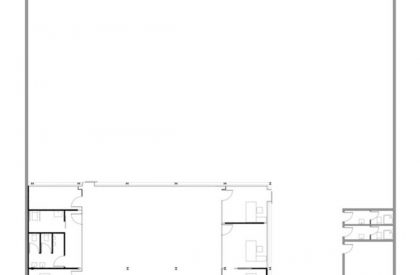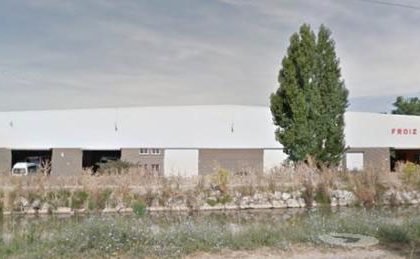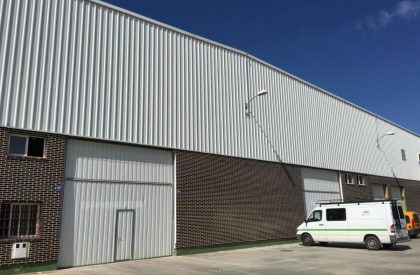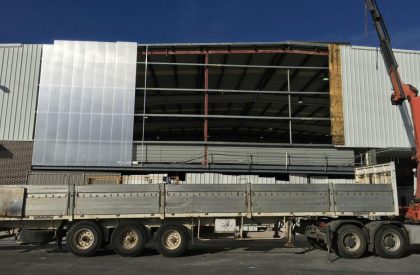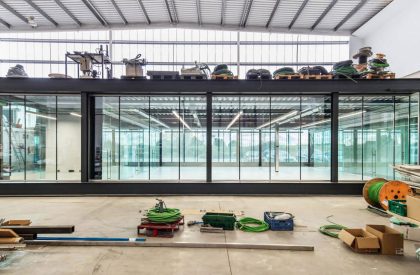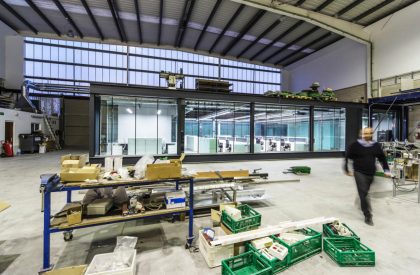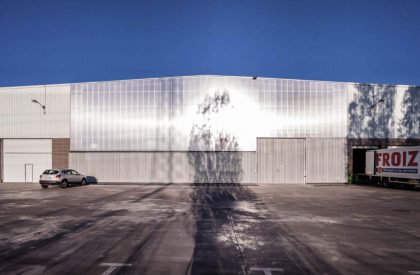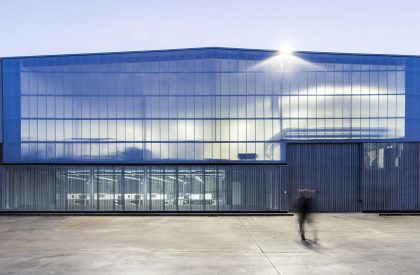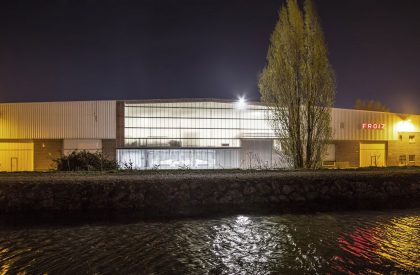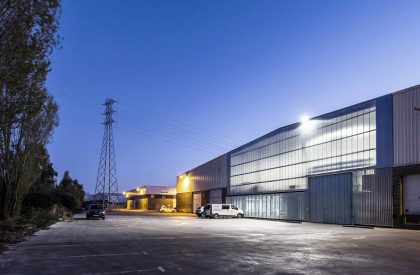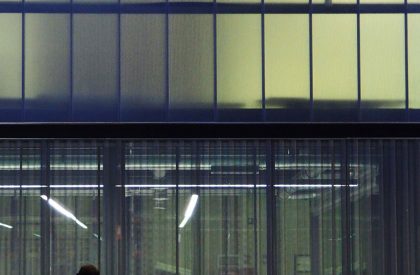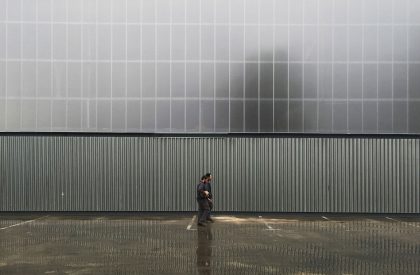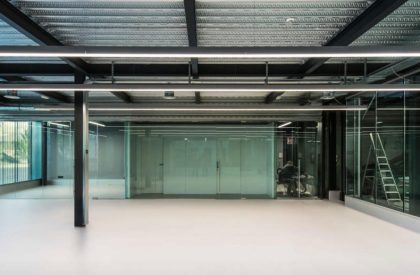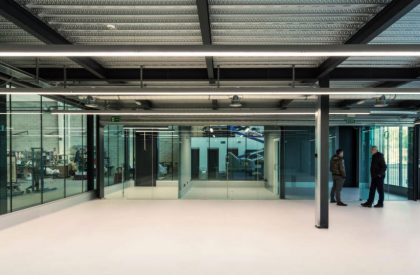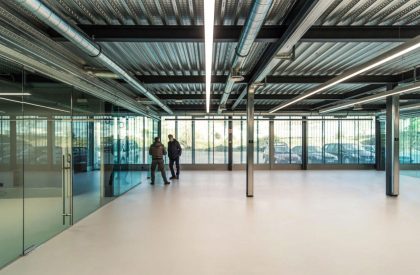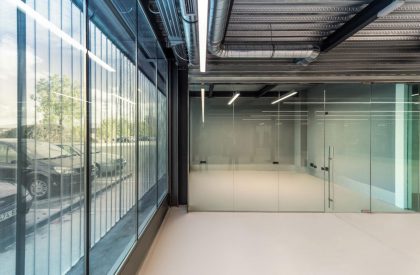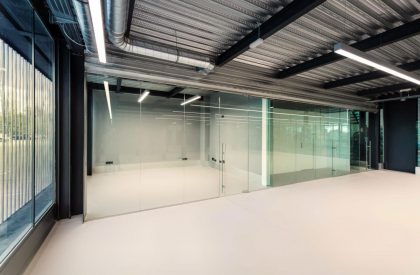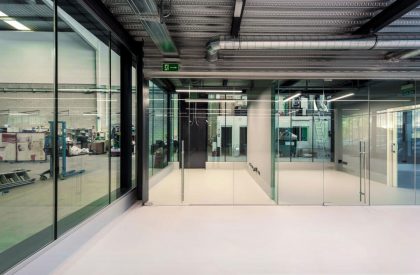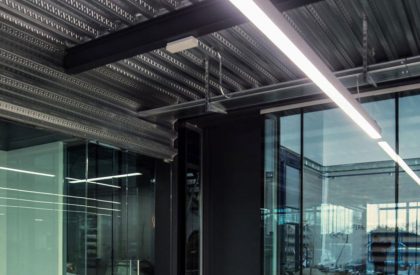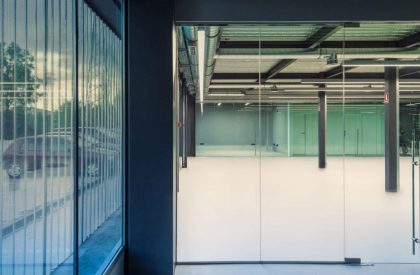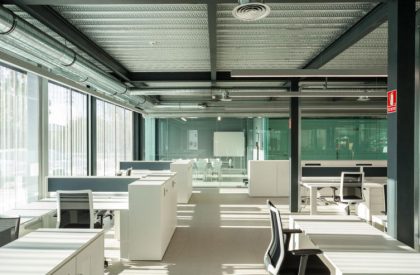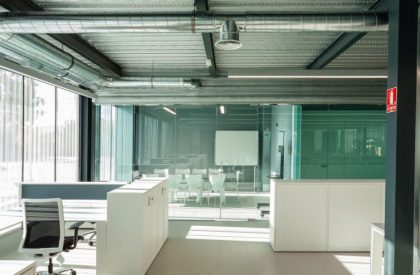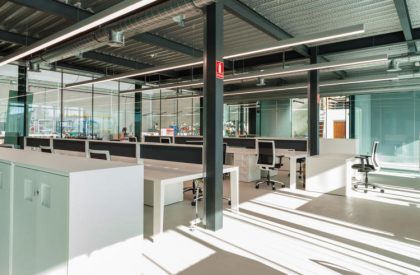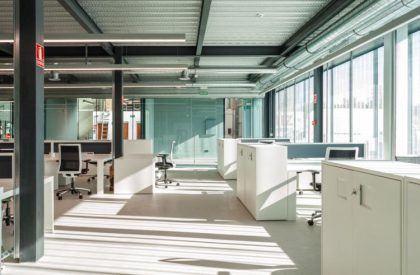Excerpt: Warehouse Rehabilitation is a refurbishment project of a warehouse into a new installation by the architectural firm Oscar Miguel Ares. The claim – and proposal to the customer – was to reconvert the traditional industrial space by providing a new atmosphere that seeks the benefit of the people working inside. The intentional creation of this new industrial atmosphere, based on natural light, improves the energy performance and the well-being of workers who are not subjected to cold and artificial clarity.
Project Description
[Text as submitted by Architect] In the peripheries of our cities it is not unusual that the industry is just construction. The manufacturing processes mark the accuracy and the calibration of the dimensioning of structures and enclosures. The logic of functionality does not allow arbitrariness. The Industry is precise, mechanical, and optimal; if it is not adapted to the productive needs, the industrial building disappears, is forgotten. It Closes.
Rehabilitating an old and abandoned warehouse, adapting it to new high-tech machines, operators and responding to the requirements of more light, space and air was the challenge that our studio had to face. It meant transforming a banal warehouse from a forgotten industrial estate into a new installation in which clarity and luminosity prevail. Our claim – and proposal to the customer – was to reconvert the traditional industrial space by providing a new atmosphere that seeks the benefit of the people working inside.
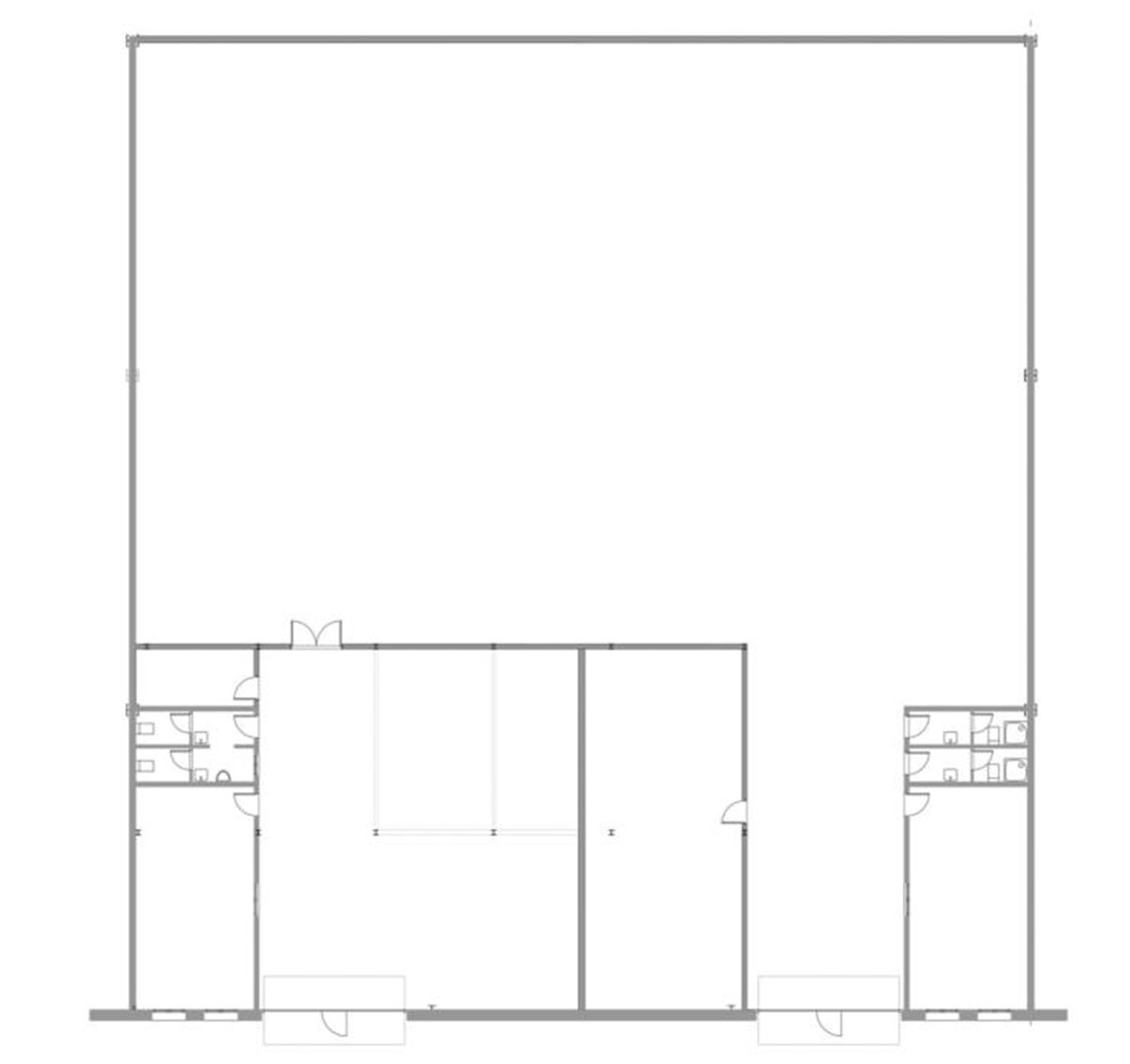


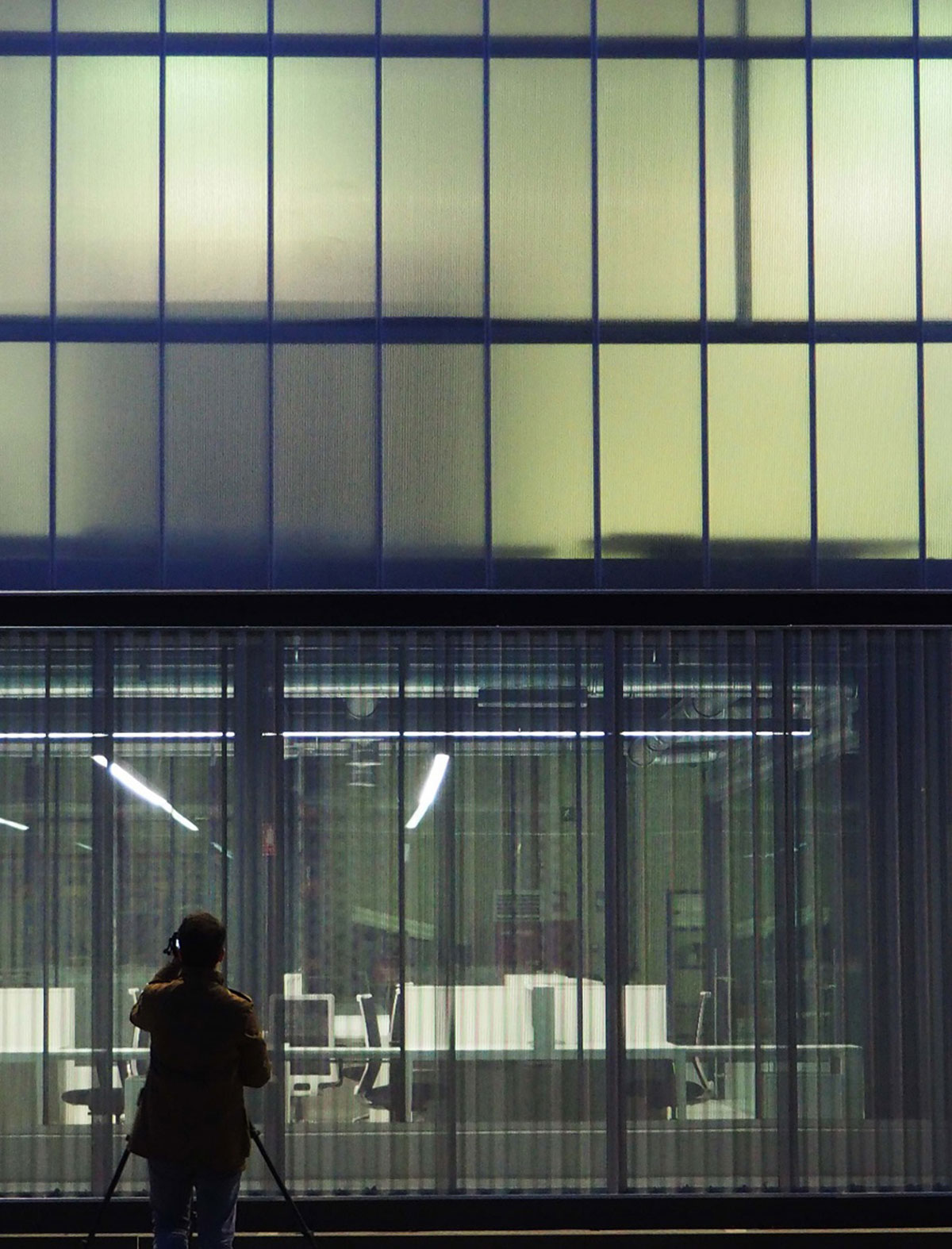

The old facade presented serious problems of stability. Consequently was replaced by new porous and translucent facade skins. The traditional industrial facade of sandwich panel and brick walls is replaced by various overlapped layers of glass, polycarbonate and perforated steel sheet, which allows daylight to filter through to the interior spaces of the warehouse and offices. The intentional creation of this new industrial atmosphere, based on natural light, improves the energy performance and the well-being of workers who are not subjected to cold and artificial clarity.
In the offices, the structure and materials are sincerely shown, replacing all opaque preexisting perimeters by glass. Structure, the mixed concrete decking slab and installations are left raw, visible and exposed. The wide glass walls allow the visual contact between the warehouse working area and the technical office; this relation is essential for a correct execution and allows the inclusion of light not only from the street but also from the interior of the warehouse.
